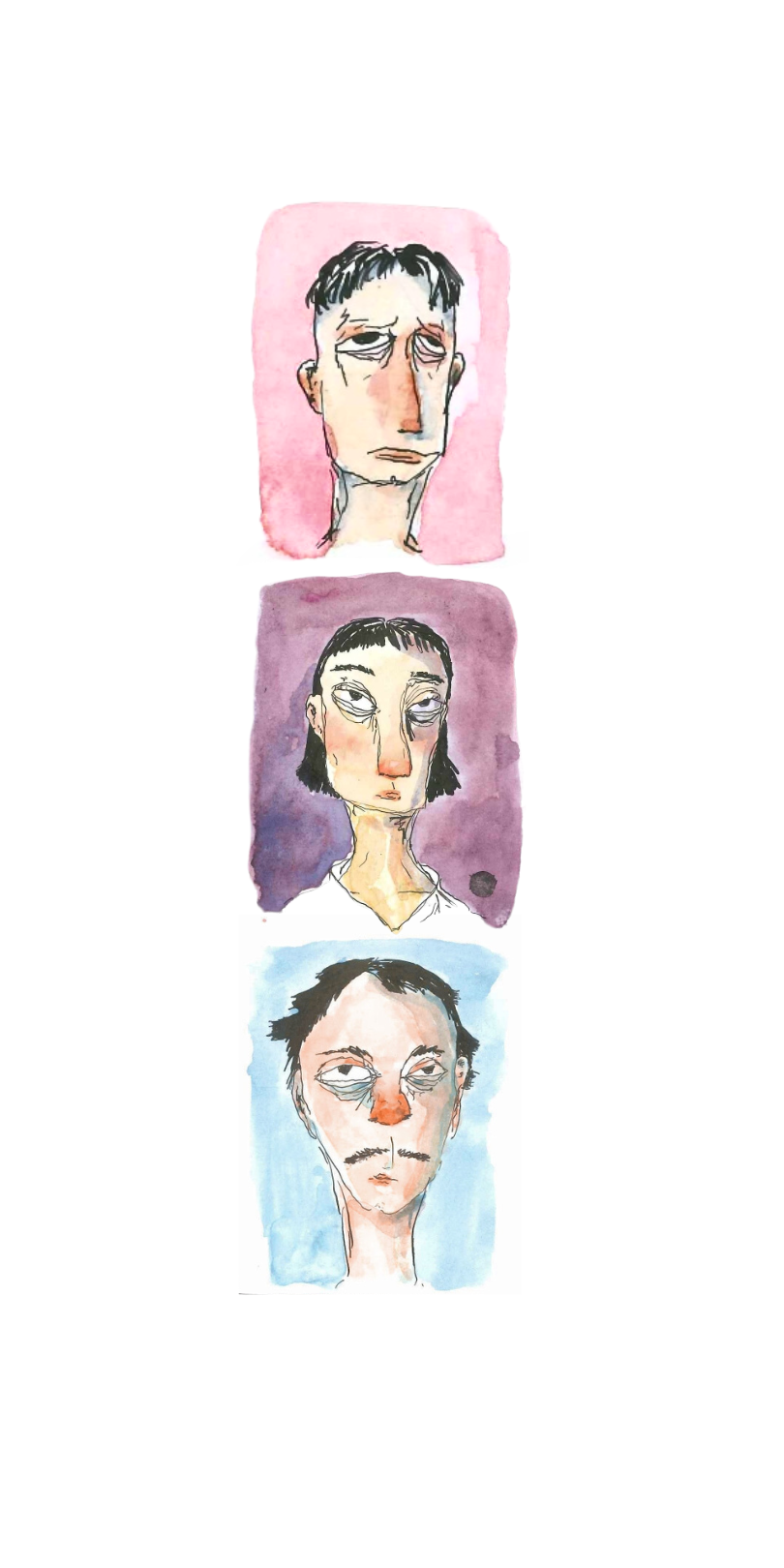
Becoming Human in Giuseppe Arcimboldo’s Paintings
It was New Year’s Day, 1569, and the Imperial Court of the Holy Roman Empire was alive with festive splendour: populated by an eclectic coterie of entertainers, furnished with exotic menageries, and known for its elaborate five-course banquets, it would have been an absolute feast for the senses of its Venetian nobles. Within such gilded halls, little might be expected to impress its emperor, Maximilian II, a man known for having exquisite taste. Yet, on the cusp of this new year, he found himself with a treat that surpassed all other fleeting pleasures: not his usual vintage wines and salmon pâtés, but a set of eight delectable paintings that he greatly relished. Just what could be so compelling about these artistic delicacies – and who, indeed, was the maestro that had cooked them up?
Giuseppe Arcimboldo was the painter in question, and a mere glance at his renowned ‘composite portraits’ explains Maximilian’s fascination. Awash with saturated hues, these glowing figures emerge from their dark canvases and assert their commanding presences even from a distance. Step closer, however, and the painted vignettes turn out to be a far cry from the Raphaels and the Holbeins that we’ve come to expect from Renaissance portraiture. Within them, the sixteenth-century’s increased self-consciousness about the fashioning of identity manifests in a remarkably different way, compelling us to reconsider our preconceptions about the nature of selfhood.
Take Summer, for instance: adhering to the period’s artistic predilection for a strict representational profile, the illuminated bust of the young man seems relatively conventional from afar, albeit striking in its polychromatic intensity. Yet, upon closer scrutiny, colourful planes of flesh and fabric swiftly coagulate into a medley of summer viands: a ruddy peach forms his cheek, an upturned pear defines his jaw, and an elaborate assemblage of foliage and straw comprise his stylish attire. The flash of his grin (constituted, no less, by a ripe pod of peas) conveys a self-assured delight at his eminence. He, clearly, is a manifestation of humanist individualism unlike any other.
Arcimboldo’s artistic feat has significant philosophical import, for it demonstrates the sheer capacity of the individual to contain and cohere their environment. Indeed, his agglomerated sitters do not merely embody hosts of organic matter; rather, they unite the diversity of nature’s parts through the strength of their individuality. Thus, in Spring, a profusion of flowers never overruns its fecundity and remains tightly bound to the silhouette of its sitter, while in Earth, wild beasts are tamed as they contort themselves into physiognomic alignment. Each part is subsumed into the whole as the human subject powerfully reigns over their surroundings – a notion that would have resonated with their royal recipient, Maximilian II, who voraciously accumulated botanical and zoological rarities from the ‘New World’ within his cabinets of curiosities. Overlaid by this ecological imperialism, the individualism displayed in the Seasons and Elements is one of conquest and possession, reflecting how objects of the natural world can be boldly assimilated into the body of a sovereign entity. To be human, then, is to have dominion over the rest of the world – and to make it bend to your will.
Yet, for all the supremacy that they portray, Arcimboldo’s paintings belie a fundamental vulnerability that effaces the discreteness of the self. Central to the strange allure of Arcimboldo’s paintings is the lack of division between the human and the elements: knock an onion off its perch and there goes the groove of a neck, along with the fulcrum that had sustained the unity of the entire head. Far from exemplars of individuality, his subjects are inseparable from – and indeed dependent on – the objects of nature that they possess. As Roland Barthes put it: “The principle of the Arcimboldoesque “monsters”’ is, in short, that Nature does not stop”. As entities predicated on an interdependent cohesion of parts, the tightly bound wholes of each Arcimboldo portrait therefore prove intensely elusive and ultimately vulnerable to the threat of dissolution.
If cohesion were to unravel, however, there would not be a gaping vacuum left in its wake, for objects in Arcimboldo’s paintings are not inert. Instead, they burst with the same vitality that characterises their human subjects. In Spring, blossoms spill out in full bloom; in Autumn, grapes are ripe for the plucking; in Water, fish surge forward along invisible currents. The precision of Arcimboldo’s brushstrokes further delineate the strong contours of these objects, producing a dynamism so salient that contemporaries such as Gian Paolo Lomazzo commended his paintings for being “so exceptionally composed” that they were “a marvel to behold”. In contrast to the lifeless, taxidermied specimens of Maximilian II’s collections, Arcimboldo’s paintings foreground the ontological distinction of their inanimate objects, giving them lives of their own that are indifferent to the lofty dreams of human conquest.
Therein lies the paradox of Arcimboldo’s composite portraits: subjects attest to their individual excellence through possessing objects, but their interdependence simultaneously renders them possessed by their objects. In turn, objects yield to the force of human hands, but nonetheless assert their individuality through their own forms of being. The once clear-cut distribution of agency between subject and object is, evidently, complicated.
This notion is given experiential weight in our own interactions with Arcimboldo’s images: between the sentient viewer and the static canvas, where does the power lie? We gaze upon the paintings as active consumers and delight ourselves in the acquisition of pleasure, knowledge, insight. Nonetheless, we are simultaneously passive receptacles upon which they descend, enlisted in the process of evoking its dual perspectives and absorbed into the images we see. This dichotomy is encapsulated by the sixteenth-century poet Gregorio Comanini, who imagined how Arcimboldo’s Vertumnus would speak to him in verse:
“Whoever you are, looking at me,
A strange and deformed image,
With a laugh on your lips
That flashes in your eyes
And stamps your face
With novel happiness
At the sight of a new monster.”
The vivacious “laugh” of the viewer and his “novel happiness” convey the ease with which he asserts his power by aesthetically evaluating the framed image. Yet, it is the painted Vertumnus that goes on to deliver eloquent lines to the mute “[s]pectator”, charging him to “[s]ing the praises of the painter, / [a]nd kneel to the great Rudolph” that he represents. The balance of power is further reversed when the lines are recited aloud: once the viewer-as-speaker inhabits the “I” of the poem, he metamorphoses into that “strange and deformed image”, becoming the “new monster” to which Vertumnus laughs gleefully at. In the strange aesthetic experience of Arcimboldo’s paintings, we teeter precariously on the frayed edges of preconceived distinctions – between subjects and objects, collectors and possessions, coherent wholes and component parts.
Suspended in this existential continuum, the ‘human being’ is less a noun than it is a verb – after all, the solidity we accrue can just as easily come undone with the tug of a cherry stem. Savouring the delicious contradiction of what it means to be human, Giuseppe Arcimboldo’s paintings are a masterclass in representing the collective nature of individualism and the participatory world that we inhabit, inviting us to look, and look again, and then to see ourselves anew. ∎
Words by Nicole Fan. Art by Ben Beechener.







